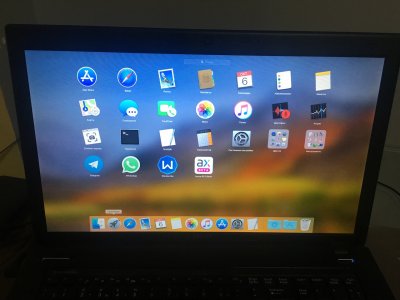- Joined
- May 31, 2015
- Messages
- 98
- Motherboard
- MSI GE70 2OE
- CPU
- Intel Haswell Core i5 4200M 2.5GHz
- Graphics
- Intel HD 4600 & NVIDIA GTX 765M
- Mac
- Mobile Phone
You could try it.
I tried and I'm not satisfied with the result, that's why I'm asking. The problem is that in both cases, either I set CSM in BIOS or I set 1024x768 in GUI section, my laptop's monitor switches to some kind of another mode while booting. That leads to a lower refresh rate and a lower color depth in macOS, so my eyes are getting tired fast. It still works with full QE/CI, but looks the same way like on the screenshots - all gradients and shadows are "steppy" and not smooth. Previously since Yosemite until Sierra the monitor didn't switch to another mode while booting, and everything worked fine, it was my perfect Hackintosh. Even now if I boot in UEFI mode and get the "garbled screen" it's not switching while booting and it's refresh rate and color depth are normal in macOS. Is any workaround possible for this? I attach the "problem reporting" files. Thank you.
PS now I use Lilu+Whatevergreen with properties in Device section. But previously with FakePCIID kexts, InjectIntel ig-platform-id = 0xa26006 and 9mb cursor patch it was absolutely the same problem. I just tried something alternative, but it brings no change.


